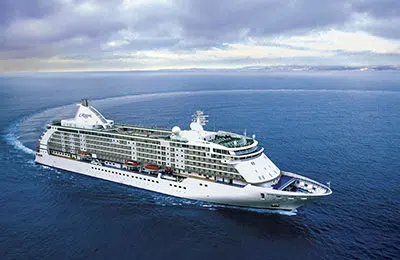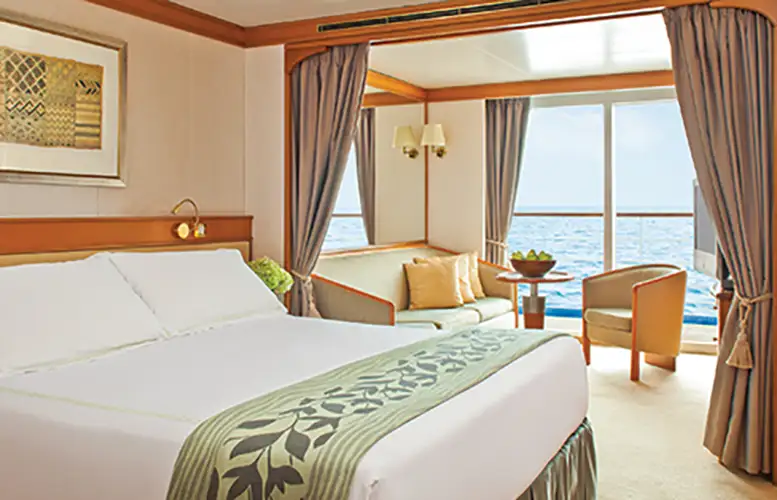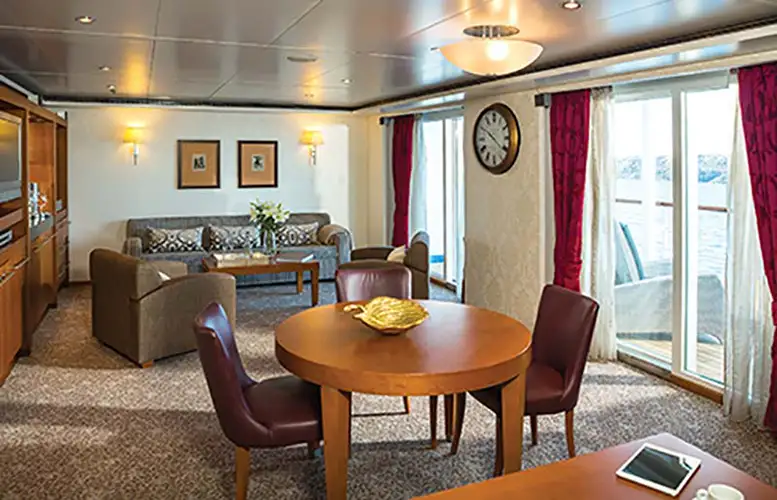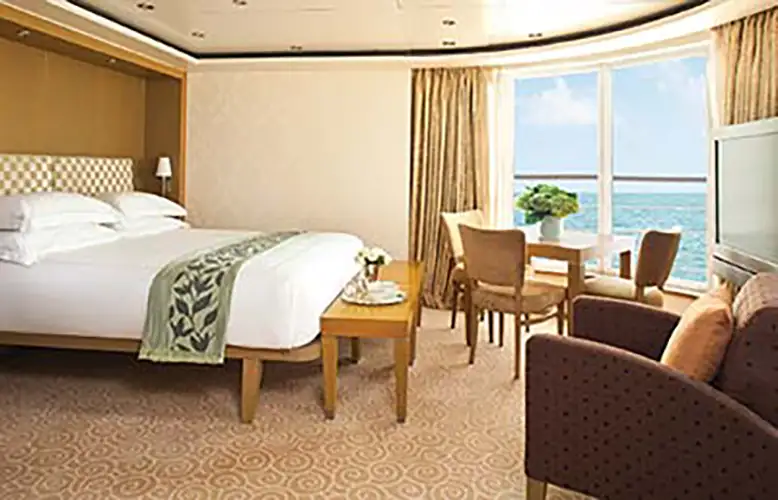Regent Mediterranean: 7 nights from Venice with Seven Seas Voyager
Oct 17, 2026
Italy, Croatia, Montenegro, Greece
Cruise itinerary
Departure Port: Venice ➞
Landing: Athens
-
Saturday, October 17, 2026 - 5:00 PMVenice
-
Sunday, October 18, 2026 8:00 AM - 6:00 PMRijeka
-
Monday, October 19, 2026 8:00 AM - 6:00 PMSplit
-
Tuesday, October 20, 2026 7:30 AM - 3:00 PMKotor
-
Wednesday, October 21, 2026Navigation
-
Thursday, October 22, 2026 8:30 AM - 5:00 PMGytheio
-
Friday, October 23, 2026 8:00 AM - 6:00 PMMykonos
-
Saturday, October 24, 2026 5:30 AMAthens
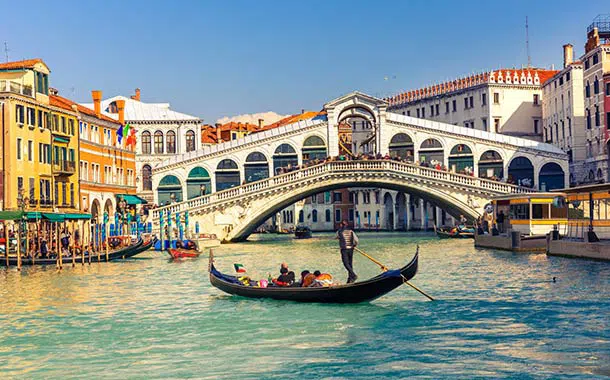
Venice
Setting sail from Venice on a cruise ship is unique and unforgettable. Discover all the cruises that depart from Venice for a great start to your holiday!
Venice it is one of the golden destinations of our age. A unique city of 120 islands, with an ancient history and endless waterways, it attracts a constant flow of tourists from all over the world to see its inspiring architecture and navigate its canals.
There are many souvenirs you can bring home from Venice, but the most lasting memory will be your impression of the city itself.
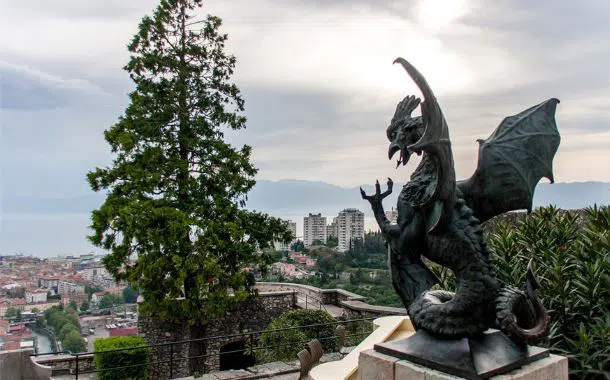
Rijeka
Rijeka is a Croatian seaport and city located in the Gulf of Kvarner, on the Adriatic coast. It is the third largest city in the country.
Before being annexed to the Yugoslav Republic in the twentieth century, it underwent Austro-Hungarian and later Italian dominations at the end of the nineteenth century. Today, the country has an excellent shipbuilding industry.
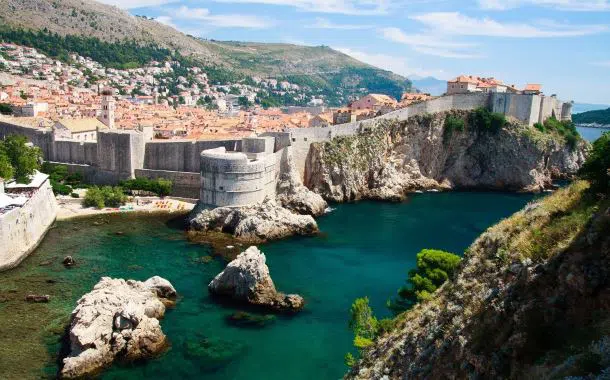
Split
Split is a city in Croatia, the capital of the Split-Dalmatia region, the main center of Dalmatia and, with its 178,192 inhabitants (2011), the second largest city in the country. Split is also a university and archiepiscopal seat.
The name of the city derives from the thorny broom, a very common shrub in the region, which in ancient Greek was called Aspálathos (Aσπάλαθος). Under the Roman Empire the city was called "Spalatum" and in the Middle Ages "Spalatro" in the Dalmatian language. In the Slavic language it is called "Split" while in Italian "Spalato". In the early 19th century the name became "Spljet" and then returned to the form "Split".
Split: Croatia's Adriatic Gem for Your CruiseEmbark on a captivating cruise from Split, Croatia, a vibrant city on the Dalmatian coast, famous for its stunning Diocletian's Palace, a UNESCO World Heritage site. This historical port offers a unique blend of ancient Roman architecture and modern Croatian life. Before setting sail, wander through the palace walls, explore its bustling markets, and enjoy the lively Riva promenade. Split provides a truly immersive cultural experience as your gateway to the enchanting Adriatic Sea.
Discover the Adriatic and Beyond from SplitCruises departing from Split open up a world of possibilities across the sparkling blue waters of the Adriatic and Ionian seas. Whether you dream of discovering the secluded coves of the Croatian islands, the historical richness of Montenegro, or the ancient allure of Greece, Split serves as an ideal launchpad. Enjoy the seamless transition from the vibrant Croatian coast to the luxurious comfort of your cruise ship, ready for days filled with relaxation, exploration, and unforgettable moments. Each voyage from Split promises breathtaking scenery and cultural immersion, leaving you with cherished memories.
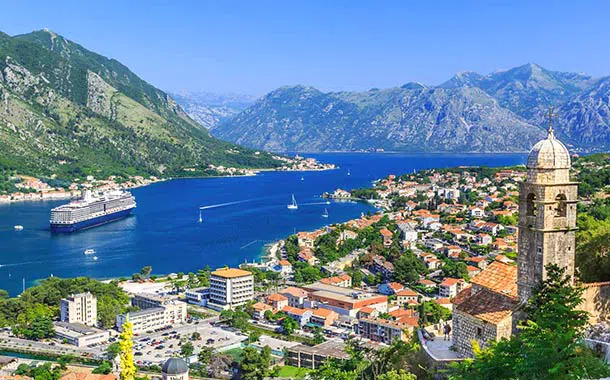
Kotor
The Adriatic Sea penetrates the jagged coast of Montenegro and winds between high mountains until it meets the exquisite and walled medieval city of Kotor.
Along the Adriatic coast of the former Yugoslavia, we find one of the most unique and fascinating European coastal areas, the city hidden in Montenegro, Kotor.
Located at the bottom of a bay, the beautiful medieval city of Kotor is considered a Mediterranean location surrounded by cliffs and an interesting historic wall. The tourist attractions of Kotor are easily reached with a pleasant walk. This small walled city, declared a UNESCO World Heritage Site, has compact dimensions that make it comfortable and easy to visit.
The central part of Kotor was built between the XII and XIV centuries. A historic center surrounded by a rather thick wall, four and a half kilometers long and fifteen meters high. This immense fortified wall reaches the bastion of Sveti Ivan (San Giovanni).
Inside the walls, it preserves an urban network cut into the stone. Its most emblematic work is the Cathedral of San Trifone, built in the 12th century. Inside the church it contains objects and frescoes sculpted during the 14th century. Furthermore, The Orthodox Church of San Nicolas, built between 1902 and 1909 in neo-Byzantine style and that of San Luca (13th century) built in Romanesque and Byzantine style.
Together with the churches, the city includes many palaces that tell its history: the Maritime Museum, located in the Grgurina Palace, a splendid baroque building located in the historic center of the country. The Drago house, with its beautiful Gothic windows, the Prima building, where Renaissance and Baroque lines are combined, the Ducal Palace and the Bizanti, both from the 17th century and the Napoleonic theater in the 19th century.
In Kotor, it is very common to see locals located along the rocky coast in the lower part of the city. In the old part of the area you will find many shops and restaurants that will delight your eyes. This location is the classic ideal city to spend quiet days or for a romantic getaway.
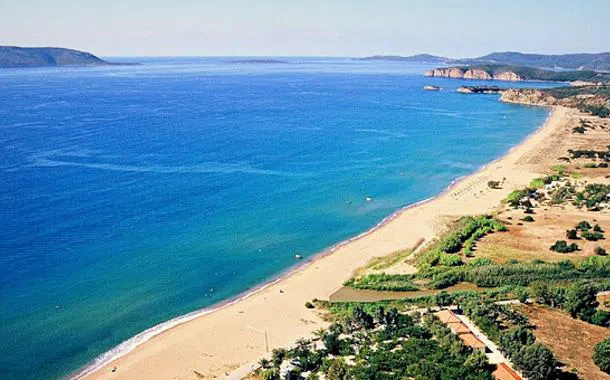
Gytheio
Located south of the Peloponnese, the city of Gytheio (or Gythion) is located north of the Gulf of Lakonia. The cosmopolitan atmosphere, the landscape of a unique island, and the variety of choices are the first impressions of visitors arriving in this paradise, formerly known as the land of the Gods. Gytheio was the port of the ancient city of Sparta and soon developed as the main export center of Laconia. On the hill, north of the village, the ruins of the citadel reside. At the foot of the hill is the ancient theater which still hosts numerous cultural events. Ornamented by various Roman constructions, associated with the mountains and the sea, it gives a prestigious natural landscape. All this wonder is combined with neoclassical buildings, with the addition of the small and charming fishing port. The beaches here are fantastic (many awarded with blue flags), especially those of Mavrovouni and Selinitsa, where you can swim and try different water sports such as windsurfing. Many cultural events take place during the summer, with music festivals, theatrical performances, and attractions for young people. The summer ends with the start of the traditional fair on September 14th which lasts for a week and, subsequently, on September 30th near the port. 10 km from Gytheio, on the road to Areopolis, there are the ruins of Passava castle, built in the early years of the conquest of the Peloponnese by the Franks, constituting the base of their barony. Don't forget to visit Trinissa, a wonderful complex of islands that provide a secluded, relaxing, and natural place.
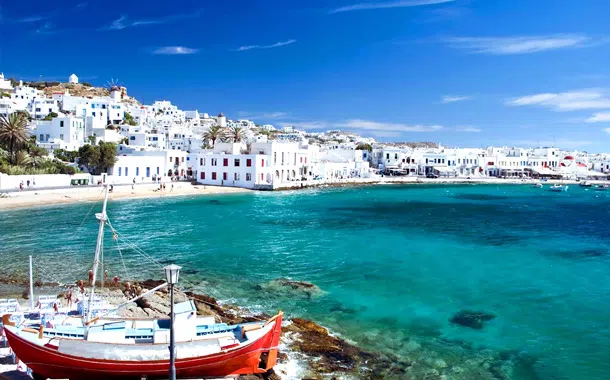
Mykonos
Mykonos is an extremely fun and fascinating place, where the frenetic mix of vacationers, fashionistas and celebrities is magically subdued to the cubist charm of the old town.
Mykonos is famous for being a cosmopolitan destination among the Greek islands and widely recognized as one of the meccas of great tourism. It is one of the most touristy islands in the Aegean Sea. Mykonos tends to be extremely crowded with visitors in July and August. The best time to visit Mykonos is mid-May through June (early in the season, accommodation is much cheaper and it's not that hot), or from September to mid-October.
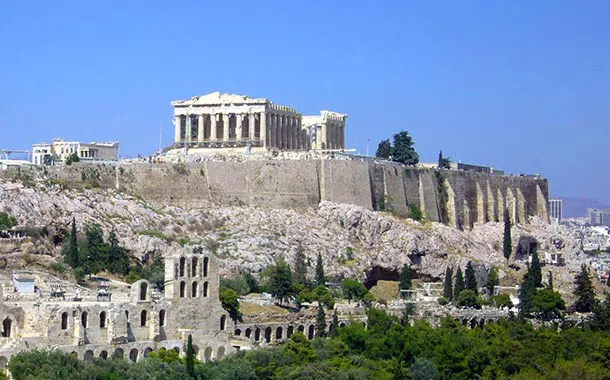
Athens
For many, Athens is a city lived two thousand five hundred years ago. Symbol is the mighty Acropolis which dominates almost every view and itinerary of every visitor, crowned by the iconic Parthenon, stands above the city, watching the sprawling modern metropolis in evolution.
Athens, the capital of Greece, is a city where antiquity and modernity, history and contemporary culture blend in a unique way. Everyone knows that the name of the city derives from the ancient Greek goddess of wisdom and justice. However, few people actually know the legend behind this event. According to myth, Athena and Poseidon, the God of the seas, vied for the right to name the city. Poseidon, to impress the inhabitants, gave them water, while Athena gave them an olive branch.
At first the choice fell on Poseidon, since the citizens considered water the most precious gift. When, once they tasted the water, they discovered that it was salty and not drinkable, they changed their minds and recognized Athena as their patron. One of the most famous historical sites in the city is the Acropolis, a majestic hill topped by ancient Doric temples, including the Parthenon, built in 477 BC. and the Erechtheion, built between 421 and 406 BC. Climbing the Acropolis, tourists can enjoy a breathtaking view of the city and the Aegean Sea. However, Athens is not only history, but also a lively cultural capital. In the Plaka district, located at the foot of the Acropolis, it is possible to stroll through the welcoming streets, visit the traditional Greek taverns and enjoy the authentic atmosphere.
Then there are the numerous cultural activities offered by the numerous museums, galleries and theaters present in the city. Athens is an important port for cruise ships that offer trips to the Mediterranean and beyond. Cruises from Athens allow guests to explore the rich cultural heritage of Greece, including the islands of Crete, Santorini and Mykonos, where you can admire the crystal clear waters of the Aegean Sea and a coast of white houses.
In addition to the Greek islands, cruises from Athens also offer the opportunity to visit other exciting Mediterranean destinations, including historic cities in Italy, Croatia and Turkey. Athens is therefore not only the historical and cultural center of Greece, but also an important starting point for cruises in the Mediterranean, which offers guests the opportunity to immerse themselves in the great history and splendid landscapes of this unique region.
Many still think of Athens as an ancient city that thrived two and a half thousand years ago. Its symbol is the mighty Acropolis, which dominates almost every view and the itinerary of every visitor, and it is crowned by the iconic Parthenon, which rises above the city, overlooking the sprawling and evolving modern metropolis.
Perhaps the most significant change is in the historical centre, which is almost unrecognisable since cars have been banned. This has liberated the area with the most significant archaeological sites, creating the longest, and undoubtedly one of the most splendid, pedestrianised zones in Europe. This huge archaeological park has brought past and present together, returning the cultural and social life of the city to the area around the ancient monuments and surrounding neighbourhoods.
Athens remains a city of contradictions; it is both frustrating and seductive. It is the oldest city in Europe, yet still in a state of transition. It is one of the safest and most vibrant European cities - an intoxicating mix of grunge and grace with an undeniably urban soul.
